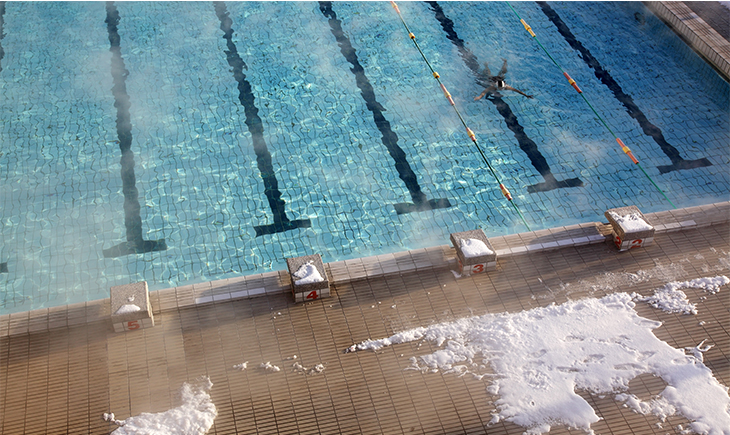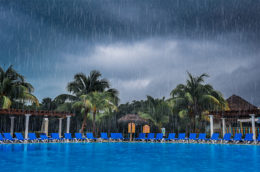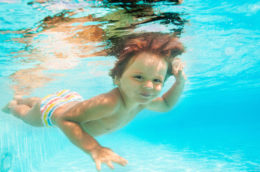Ah, summer—warm weather, enjoying the pool with friends and family, and, of course, summer storms.…

How Do I Prepare My Swimming Pool Water for Winter?
Summer is coming to an end and as the colder weather starts rolling in most pools get far less bather use and many get no use at all. Because of the infrequent pool use most pool owners are also inclined to test and treat their pool water less often in the cooler months. And in areas where air temperatures can make water freeze, the use of pools usually stops entirely for those who don’t use a heat pump or other equipment to keep their pool water warm.
But pool water chemistry needs to be dealt with regardless. After all, algae and water-borne pathogens don’t disappear during these times although their reproduction rates do in fact slow down.
Cooler water temperatures, less intense sunlight, fewer wind and rain storms and, of course, diminished bather use all tend to reduce the growth of populations of algae and pathogens.
A season of little or no attention to the pool water can produce a nasty collection of undesirable results in your pool. The most common among these are heavy algae growth, biofilm growth, increased populations of microorganisms associated with disease, stains on pool surfaces and, in freezing weather, ruptured plumbing.
Fortunately, a few simple steps can be taken as the chilly season arrives which can prevent these things from happening.
The first step should always be to make sure there is no debris in the skimmer basket or filter trap, and to clean the filter. For a sand filter, backflush. For a cartridge filter, use an effective cleaner and then rinse well. Filter & tile cleaner by Lo-Chlor® is excellent for this purpose.
Shocking the pool water is an important next step. Since algae and other pathogens require phosphate in order to reproduce, adding a strong phosphate remover at this time is very helpful. Lo-Phos Max by Lo-Chlor® is one of the strongest and safest on the market.
Once the shock and phosphate remover have been circulated in the pool via the pump for at least a day, it’s time to add a good algicide to further inhibit algae growth. 90 Day Algicide by Lo-Chlor® is used in all regions of the U.S. for this purpose. It’s copper-based which means that unlike polymer algaecides it is long-lasting and can’t chemically break down. This product is also guaranteed not to stain.
A metal sequestrant to keep metals in the water from staining surfaces should be added. Metals are always in your water. They come in with fill water and are contributed by pool water contact with metal equipment and fittings. Nobody wants to see that their pool has become badly stained when springtime comes around and so a good metal sequestrant such as Metal Gone by Lo-Chlor® is an excellent insurance policy.
After the phosphate remover and metal sequestrant have circulated for a day, the pool can be closed in those colder areas where freezing water can be a problem.
Closing the pool requires that lines, and any vessels without a blow-out fitting, be cleared of water. When water freezes it expands and that can destroy plumbing and equipment. To avoid this, a variety of good, specialized equipment exists to clear water from the lines with little or no draining of water from the pool. Some people actually use a shop-vac. And there are pool service companies in nearly every area who do this professionally. As long as the pipes are cleared of water, and closed up against water’s intrusion (via rain, snow melt, etc.) any method will do.
Questions? Comments? Leave us a message, we are here to help!




This Post Has 0 Comments